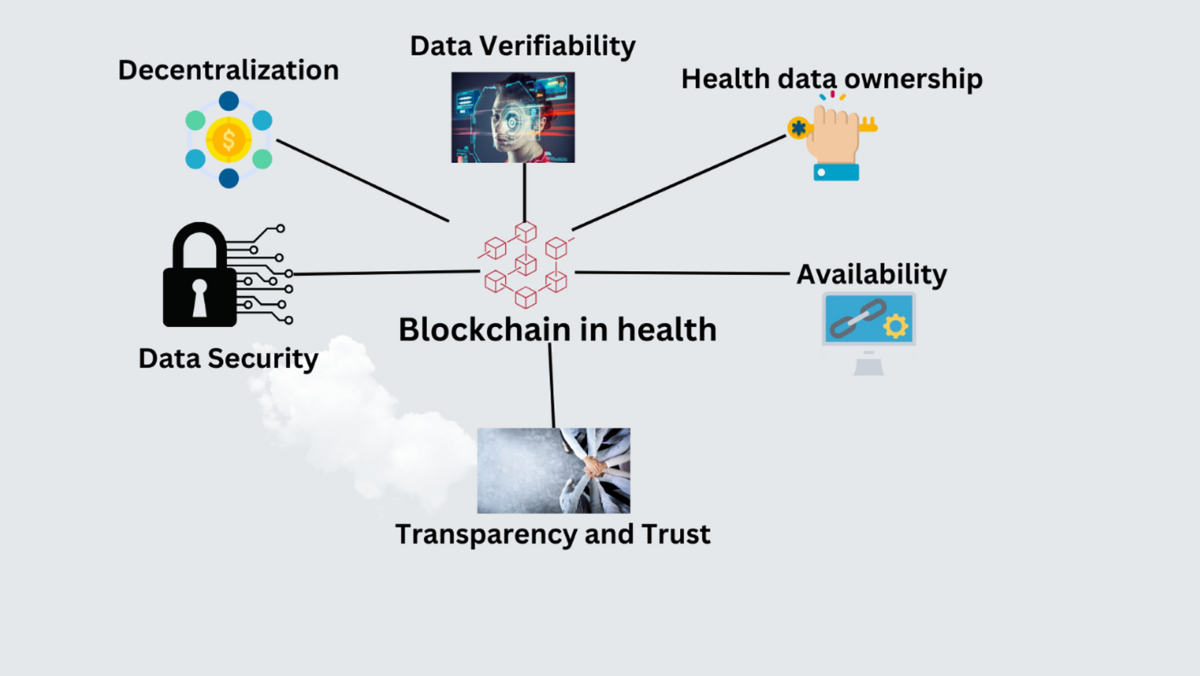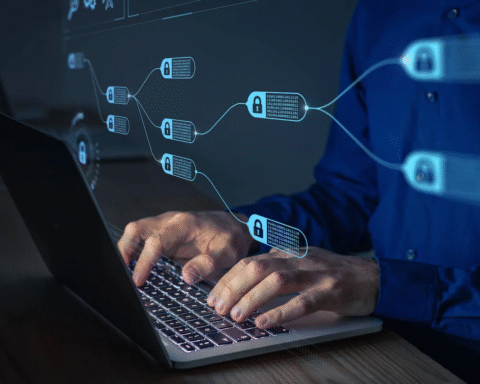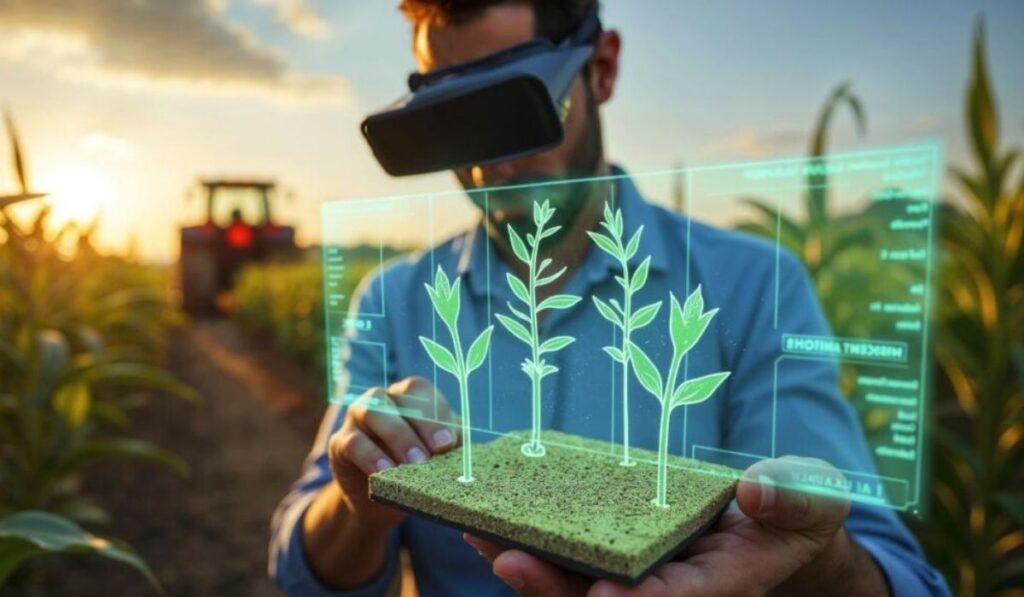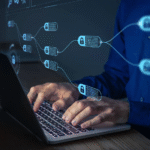The digital age is witnessing an incredible fusion of two groundbreaking technologies Artificial Intelligence (AI) and Blockchain. Individually, they’ve each reshaped the world of innovation, automation, and security. But when combined, they’re not just complementary; they’re revolutionary.
Imagine a blockchain system that doesn’t just store data immutably but also thinks analyzing trends, predicting threats, optimizing operations, and even making autonomous decisions. This is the promise of AI-powered blockchain ecosystems smarter, faster, and more secure than ever before.
As businesses explore deeper digital transformation, the synergy between AI and blockchain is quickly becoming one of the most important tech trends of the decade. Let’s explore how Artificial Intelligence is enhancing blockchain’s intelligence, efficiency, and resilience across industries.
The Perfect Duo: AI and Blockchain
To understand how AI is transforming blockchain, we first need to appreciate what makes each technology unique.
- Blockchain offers decentralized, tamper-proof ledgers that enable transparent transactions without intermediaries.
- AI, on the other hand, mimics human intelligence learning from data, identifying patterns, and making predictions or decisions autonomously.
When combined, these technologies overcome each other’s limitations. Blockchain provides trust, traceability, and immutability, while AI adds speed, automation, and decision-making intelligence.
This integration is being actively developed and adopted by every blockchain development company aiming to stay ahead in the digital innovation race. From smart contracts that self-optimize to AI-driven fraud detection in decentralized finance (DeFi), the applications are vast and rapidly evolving.
Why AI and Blockchain Belong Together
The core challenge of blockchain lies in scalability, energy use, and data processing limits. Meanwhile, AI struggles with data privacy, transparency, and explainability.
Together, they fill in each other’s gaps:
| Blockchain’s Weakness | Solved by AI |
| Slow transaction processing | AI optimizes network and mining efficiency |
| Limited scalability | AI-driven predictive scaling and resource allocation |
| Difficulty interpreting large datasets | AI analytics provide deep insights |
| Security vulnerabilities (e.g., 51% attacks) | AI threat detection enhances network defense |
| AI’s Weakness | Solved by Blockchain |
| Data tampering risks | Immutable blockchain storage ensures integrity |
| Lack of transparency | Blockchain’s audit trails make AI decisions traceable |
| Centralized model training risks | Blockchain-based decentralized data sharing ensures fairness |
This “give and take” relationship makes AI and blockchain not just compatible, but inseparable for the next wave of technological evolution.
Top Ways AI is Making Blockchain Smarter
1. Predictive Analytics for Blockchain Efficiency
AI’s predictive models analyze blockchain data to forecast network traffic, gas fees, and resource bottlenecks. In public blockchains like Ethereum, this can mean faster transactions and fewer congestions.
For enterprises, predictive algorithms can monitor private blockchains, identifying performance drops or anomalies before they escalate into system failures.
2. Smarter Smart Contracts
Traditional smart contracts execute predefined conditions automatically, but they lack adaptability.
By integrating AI, smart contracts become dynamic capable of interpreting context, assessing risks, and even negotiating minor changes autonomously.
For instance, in supply chain finance, AI-powered smart contracts can adjust payment terms based on shipment delays or market volatility.
3. Enhanced Data Security and Privacy
Blockchain is known for its immutable structure, but AI adds a layer of intelligent security. Machine learning models detect unusual transaction patterns and halt suspicious activities before they spread.
In industries like healthcare and banking, AI-driven blockchains protect sensitive data while ensuring compliance with data privacy laws like GDPR and HIPAA.
4. Improved Consensus Algorithms
Blockchain’s consensus mechanisms (like Proof of Work or Proof of Stake) can be optimized through AI.
AI models analyze historical blockchain data to identify optimal validation processes, reducing energy consumption and latency while increasing accuracy. This is especially useful for private or hybrid blockchains that demand faster validation cycles.
5. Fraud Detection and Risk Assessment
AI systems integrated with blockchain can monitor transactions in real-time, detecting fraud and identifying high-risk entities.
Financial institutions, insurance firms, and exchanges are already leveraging AI-enhanced blockchain analytics to prevent illegal activities like money laundering and phishing.
AI Enhancing Blockchain Security: How It Works
Security remains the crown jewel of blockchain technology but no system is foolproof. While blockchain’s cryptography and decentralization reduce risk, human error, malicious nodes, and emerging attack vectors can still exploit vulnerabilities.
Here’s where AI steps in:
- Threat Prediction: AI models use behavioral analytics to identify unusual node behavior and potential attacks.
- Automated Response: Machine learning systems can automatically isolate suspicious nodes and adjust encryption parameters.
- Continuous Learning: Unlike static security models, AI learns from past incidents to constantly refine its defense strategies.
This synergy has made AI a crucial part of next-generation blockchain infrastructure especially in DeFi, NFT marketplaces, and crypto exchanges, where millions of transactions occur in real-time.
Industries Benefiting from AI-Blockchain Integration
1. Finance and Banking
The combination of blockchain transparency with AI intelligence has revolutionized fintech. AI detects fraudulent activities, while blockchain ensures secure peer-to-peer transactions.
Smart contracts now handle settlements, lending, and identity verification, all powered by predictive AI models.
2. Healthcare
AI analyzes medical data stored securely on blockchain networks, enabling better diagnosis and treatment recommendations without compromising patient privacy.
Hospitals can share anonymized health records globally for research ensuring transparency through blockchain and analytical depth through AI.
3. Supply Chain
Blockchain provides product traceability, while AI optimizes logistics routes, predicts delays, and ensures quality control.
Together, they create intelligent supply chains that are transparent, efficient, and sustainable.
4. Energy
In decentralized energy grids, AI helps predict energy consumption, manage load balancing, and automate pricing through blockchain-based smart contracts.
This fosters green energy usage and reduces operational costs.
5. Real Estate
AI analyzes market data, pricing trends, and buyer behavior, while blockchain ensures secure and transparent property transactions.
Together, they eliminate intermediaries, reduce fraud, and make real estate investment more accessible.
AI-Blockchain in Action: Real-World Examples
- Ocean Protocol:
This decentralized data exchange allows AI models to access and train on blockchain-stored data without exposing sensitive information. - Fetch.AI:
Combines blockchain with AI agents for autonomous decision-making in logistics, energy, and trading sectors. - SingularityNET:
A marketplace where AI services are traded on blockchain, ensuring fair compensation and transparency. - Numerai:
A hedge fund that uses encrypted blockchain data for AI-driven stock predictions, rewarding contributors through tokens.
These examples highlight the growing ecosystem where blockchain and AI not only coexist but co-evolve.
Challenges in Merging AI with Blockchain
Despite its potential, merging AI and blockchain isn’t without hurdles.
- Data Volume: AI requires massive datasets, which can be expensive to store on-chain.
- Processing Power: Training AI on decentralized networks demands high computational efficiency.
- Interoperability: Different blockchains have varying standards, complicating AI integration.
- Regulatory Ambiguity: Combining two evolving technologies creates uncertainty in compliance and governance.
However, with advancements in layer-2 solutions, off-chain data processing, and federated learning, these challenges are being actively addressed.
The Future of AI-Enhanced Blockchains
The coming decade will see blockchain networks evolve from passive ledgers to autonomous, adaptive ecosystems.
AI will play a critical role in:
- Enabling self-healing blockchains that detect and fix vulnerabilities automatically.
- Powering AI-driven governance models for DAOs (Decentralized Autonomous Organizations).
- Driving AI-supported crypto trading bots that analyze market data stored on blockchain in real-time.
- Creating ethical, transparent AI systems verifiable through immutable blockchain records.
The result? A future where trust and intelligence converge transforming how we handle data, transactions, and automation.
Why Businesses Are Investing in AI-Blockchain Fusion
Forward-thinking enterprises are already investing in the convergence of AI and blockchain for several strategic reasons:
- Enhanced Trust: Immutable audit trails make AI decisions explainable.
- Data Sovereignty: Blockchain ensures users retain control over their data.
- Operational Efficiency: AI optimizes processes across blockchain ecosystems.
- Innovation Edge: Businesses deploying these technologies gain an early-mover advantage in Web3 ecosystems.
In short, the AI-blockchain duo is setting a new gold standard for digital innovation.
How to Get Started with AI-Powered Blockchain Solutions
Organizations looking to explore AI-blockchain synergy must begin by identifying areas where automation and security intersect.
For instance:
- Smart Contract Optimization through AI-based analytics.
- Fraud Detection via predictive models monitoring on-chain activity.
- Decentralized Data Management ensuring secure AI training datasets.
Collaborating with an experienced blockchain development company can help businesses integrate AI capabilities into existing decentralized ecosystems, unlocking new levels of intelligence, transparency, and operational efficiency.
Combining AI and Blockchain: A Step Toward a Smarter Digital Future
The intersection of AI and blockchain is not just an upgrade; it’s a complete paradigm shift.
By merging intelligence with trust, we’re moving toward systems that are self-learning, self-regulating, and self-secure the pillars of next-generation digital ecosystems.
From automating supply chains to securing financial networks and powering decentralized AI marketplaces, this fusion is redefining the boundaries of innovation.
Businesses seeking to develop advanced, scalable, and secure AI-blockchain solutions can leverage custom AI development services tailored to their unique operational needs. These services enable organizations to design intelligent decentralized systems that evolve with real-time data insights creating long-term value, transparency, and digital resilience.
Conclusion
Artificial Intelligence and Blockchain are no longer isolated buzzwords they’re the dual engines driving digital transformation in the 21st century.
Together, they’re paving the way for decentralized intelligence systems that think, predict, and protect in real-time.
As industries transition toward Web3 and autonomous ecosystems, the integration of AI with blockchain will be the key differentiator between legacy systems and future-ready enterprises.
Companies like Suffescom Solutions Inc. are already pioneering this transformation by merging AI innovation with blockchain expertise. Their commitment to developing secure, intelligent, and scalable blockchain systems is setting benchmarks for the digital economy of tomorrow.
Read More Gorod










